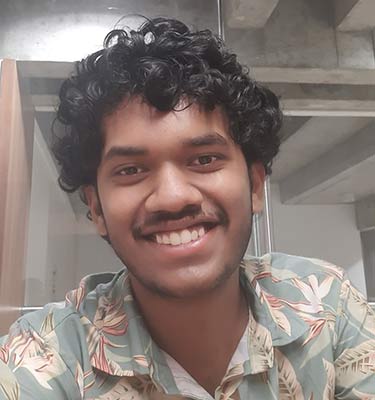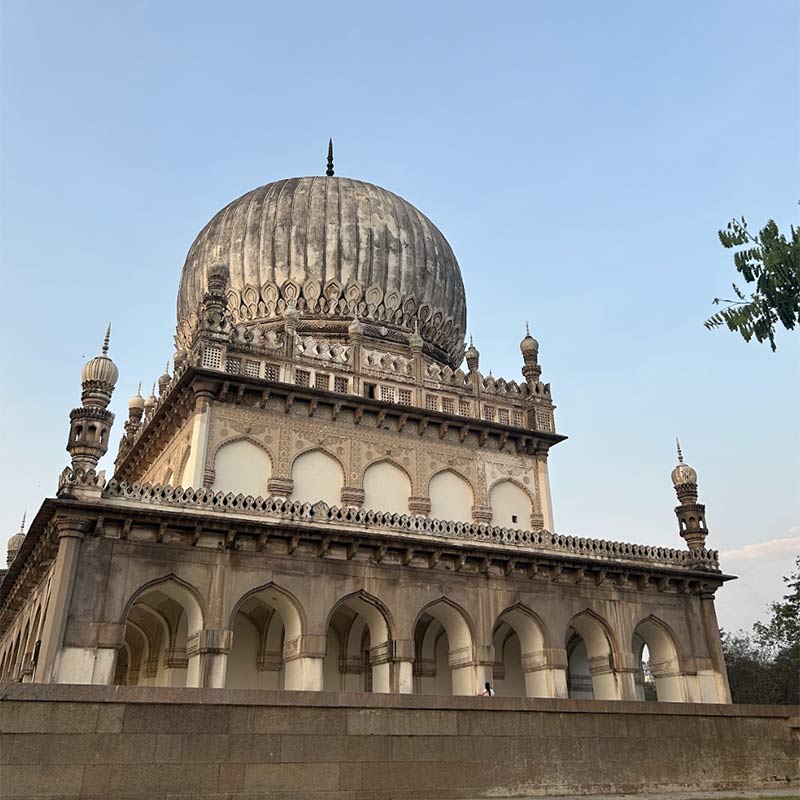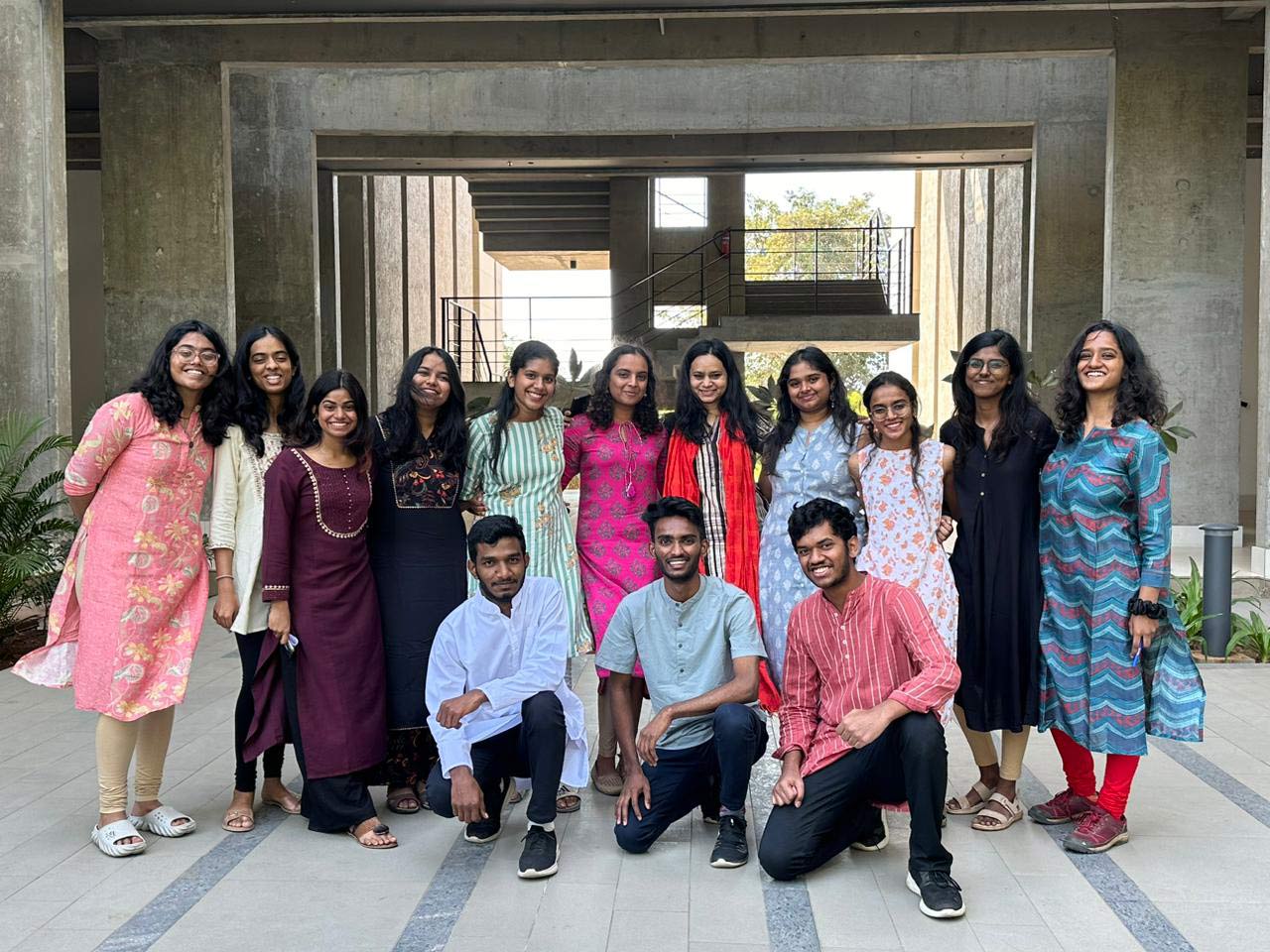VOICE OF FLAME
Daawat-e-Hyderabad- Exploring Hyderabad’s Culinary Landscape | Discover India Program
17 Sep 2024 | Author: Sri Prahas |

Daawat-e-Hyderabad- Exploring Hyderabad’s Culinary Landscape | Discover India Program
The Discover India Program is an exceptional opportunity provided to second-year undergraduate students at FLAME University. Participants collaborate in teams and embark on journeys across India to explore its rich cultural, social, and historical significance. During the program, extensive pre-field and on-field research, incorporating both primary and secondary sources, is conducted. This culminates in the creation of a comprehensive report, a compelling presentation, and an insightful documentary.
Our student group, comprising 13 members, chose to explore the culinary landscape of Hyderabad. Our focus encompassed the evolution of Hyderabad's cuisine, factors influencing these changes, and the diverse food preferences across different cultures and age groups.
Although the project presented unfamiliar challenges, we enthusiastically embraced the opportunity to shape our work according to the vision. Effective communication and constructive feedback played pivotal roles in steering the project towards successful outcomes.
Exploring Hyderabad’s Food and Cultural Heritage


Hyderabad is renowned for its unique blend of Mughal splendor, Qutb Shahi craftsmanship, and the warmth of Telugu and Marathi traditions. The city's culinary treasures such as Biryani, Haleem, and Pathar ka Gosht reflect this rich fusion. Hyderabad is a culinary haven, offering a wide array of dining experiences, including Telugu Tiffin Centres, Mandi places, cafes, food streets, and more.
We aimed to explore the diverse cuisines of Hyderabad, the innovative developments in its culinary landscape, the historical influences of empires and rulers on 'Hyderabadi Cuisine', the impact of immigrant food styles, the shifts in popularity of Irani restaurants and cafes, and the narratives behind these culinary transformations as seen through the local perspective.
Learning About Hyderabad’s Foodscape Through Interviews
In the process of our secondary research, we delved into scholarly articles, research papers, journals, and other pertinent sources that explored the field of food anthropology on both a global scale and within the context of India, particularly Hyderabad. Furthermore, we carried out primary research by engaging in discussions with a diverse array of individuals, including academics, chefs, food influencers, bloggers, restaurant proprietors and staff, university students, working professionals, and residents of various age groups. In total, we conducted over 120 interviews and continually refined our interview approach based on the valuable insights shared by our interviewees.
Discovering the Importance of Food, Media and Innovation in Hyderabad
 Hyderabad, known for its rich cultural heritage, has undergone numerous changes influenced by shifting empires and the evolving ideals of its people. The city experienced a surge in food-related businesses following the IT boom. Notably, ‘Pista House’ and ‘Karachi Bakery’ distinguished themselves from competitors through innovative production and marketing strategies, catering to the mass production of regional sweets.
Hyderabad, known for its rich cultural heritage, has undergone numerous changes influenced by shifting empires and the evolving ideals of its people. The city experienced a surge in food-related businesses following the IT boom. Notably, ‘Pista House’ and ‘Karachi Bakery’ distinguished themselves from competitors through innovative production and marketing strategies, catering to the mass production of regional sweets.
Additionally, migration has played a crucial role in this transformation, with individuals relocating to Hyderabad, including IT professionals and food entrepreneurs, as exemplified by the vibrant "DLF Street".
It is no surprise that social media has had a deep influence on innovation. For restaurants, a strong social media presence is crucial, as young people often depend on recommendations and reviews from social media platforms to decide where to eat. This requires creating original taglines and posts, as well as sharing visually engaging and appetizing food content.
The Tale of Hyderabad’s Iranian Restaurants and Cafés
 Hyderabad's Irani cafés have played an essential role in shaping the city's cultural landscape. They represent the fusion of Persian traditions with Indian cuisine, offering a truly distinctive dining experience. Established by Iranian immigrants during various historical periods, these cafés quickly became popular for their unique offerings and welcoming atmosphere.
Hyderabad's Irani cafés have played an essential role in shaping the city's cultural landscape. They represent the fusion of Persian traditions with Indian cuisine, offering a truly distinctive dining experience. Established by Iranian immigrants during various historical periods, these cafés quickly became popular for their unique offerings and welcoming atmosphere.
Unfortunately, the Irani café culture is dwindling due to increasing lease costs, competition from contemporary eateries, and the younger generation's lack of interest in continuing their family's businesses.
Despite the challenges, certain cafés have managed to thrive by implementing advanced methods, while others have opted to stay traditional and continue to cater to their loyal local clientele.
A Cultural Blend of Diets, Customs and Connections
Through our research, we have identified several key elements that have a significant impact on individuals' dietary preferences. These factors include age, occupation, health consciousness, and cultural traditions. For instance, our findings indicate that older individuals often prefer home-cooked meals due to their perception of being healthier and safer, while younger individuals tend to opt for fast food and restaurant dining due to the convenience and enjoyment it offers.
Moreover, an individual's dietary choices are influenced by their occupation, economic situation, and the physical demands of their work. We discovered that individuals in physically demanding jobs, such as police officers, often require high-protein foods to sustain their energy throughout long work hours.
During our interviews, students mentioned that budget considerations heavily influence their dining choices when eating out. Additionally, we observed an increasing trend towards health-conscious food choices among individuals.
Furthermore, we found that cultural customs and festivals play a substantial role in shaping cuisine preferences. For example, we noted that specific dishes are prepared during Hindu and Muslim festivals, reflecting the significance of cultural traditions in shaping dietary habits.
Lastly, we learned that some individuals from low-income households prefer home-cooked meals because they evoke a sense of comfort and nostalgia and foster shared connections over meals.
Preparing for the Field: Working and Learning as a Team
 Our experience with the Discover India Program was both enjoyable and intellectually challenging, requiring dedication and a willingness to learn new things. Throughout the process, our team utilized meetings, brainstorming sessions, feedback from faculty and seniors, and various resources to select a topic and allocate tasks based on individual strengths. We established three distinct teams to handle different aspects of the project:
Our experience with the Discover India Program was both enjoyable and intellectually challenging, requiring dedication and a willingness to learn new things. Throughout the process, our team utilized meetings, brainstorming sessions, feedback from faculty and seniors, and various resources to select a topic and allocate tasks based on individual strengths. We established three distinct teams to handle different aspects of the project:
- Content Team: Responsible for compiling academic notes from all team members and producing the report.
- Finance and Logistics Team: In charge of arranging logistics such as obtaining necessary documentation, making travel arrangements, and securing accommodations.
- Documentation Team: Tasked with compiling videos, audio, and photos to create a comprehensive documentary.
Although we were divided into teams, we maintained a collaborative spirit, readily assisting one another across departments, which greatly enhanced our teamwork and streamlined our efforts. We conducted thorough secondary research and conducted preliminary interviews.
Additionally, we put in the effort to coordinate accommodations and travel schedules, and the documentation team honed their skills by capturing and compiling various multimedia elements.
A Journey Filled with Connections and Experiences


Our time on the field was incredibly enjoyable. On the train rides, we kept ourselves entertained with games such as UNO and Antakshari. Continuous collaborations and daily interactions allowed us to forge new connections. Organizing ourselves into groups of four significantly enhanced our work efficiency. This approach enabled us to visit more locations, gather extensive data, and enhance our productivity.
Packing Up the Pursuits
 The final stage of our project involved packing up all the different components we had worked on. With only a month to complete everything, our team was divided into different groups responsible for the report, presentation, and documentary. The content team focused on structuring the report by organizing data from interviews into categories and writing distinct chapters. Meanwhile, the finance and logistics team worked on sorting out expenses and ensuring that we received the necessary funds. Additionally, the documentary team dedicated their efforts to constructing a creative and compelling narrative through footage and shots.
The final stage of our project involved packing up all the different components we had worked on. With only a month to complete everything, our team was divided into different groups responsible for the report, presentation, and documentary. The content team focused on structuring the report by organizing data from interviews into categories and writing distinct chapters. Meanwhile, the finance and logistics team worked on sorting out expenses and ensuring that we received the necessary funds. Additionally, the documentary team dedicated their efforts to constructing a creative and compelling narrative through footage and shots.
On the day of the presentation, our team members dressed in traditional attire and confidently delivered our presentation along with the documentary. This was a highly anticipated moment as we eagerly sought to share our findings with our professors and peers, and we were rewarded with positive feedback.
The DIP program was a whirlwind of emotions, with moments of triumph and challenge, times of conflict and connection, and an interplay of lightheartedness and hard work. It was an unforgettable experience that left a lasting impression on all of us.
Team Members: Hasita Pattipaty (Group Representative), Adhithi Senthilkumar, Akshitha Reddy Kandi, Arpana Karthik, Deevan Kumar Gaddala, Jahanavi Rathi, Laya Lakshminarayan, Nitisha Awnoory, Reva Pande, Sai Rishi Pirangi, Sri Prahas Pabolu, Veena Selvaraj, and Vidhi Mantry.
Faculty Mentor: Prof. Juhi Sidharth, Faculty of Public Policy.
(Author: Sri Prahas, Undergraduate Student)






